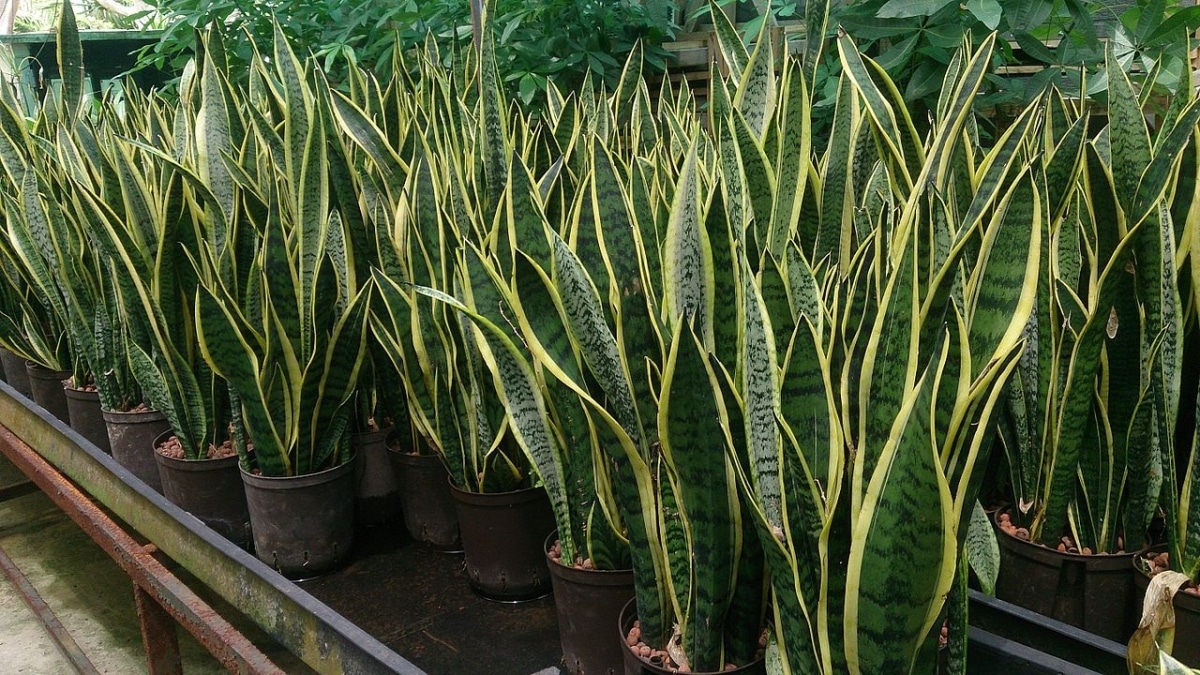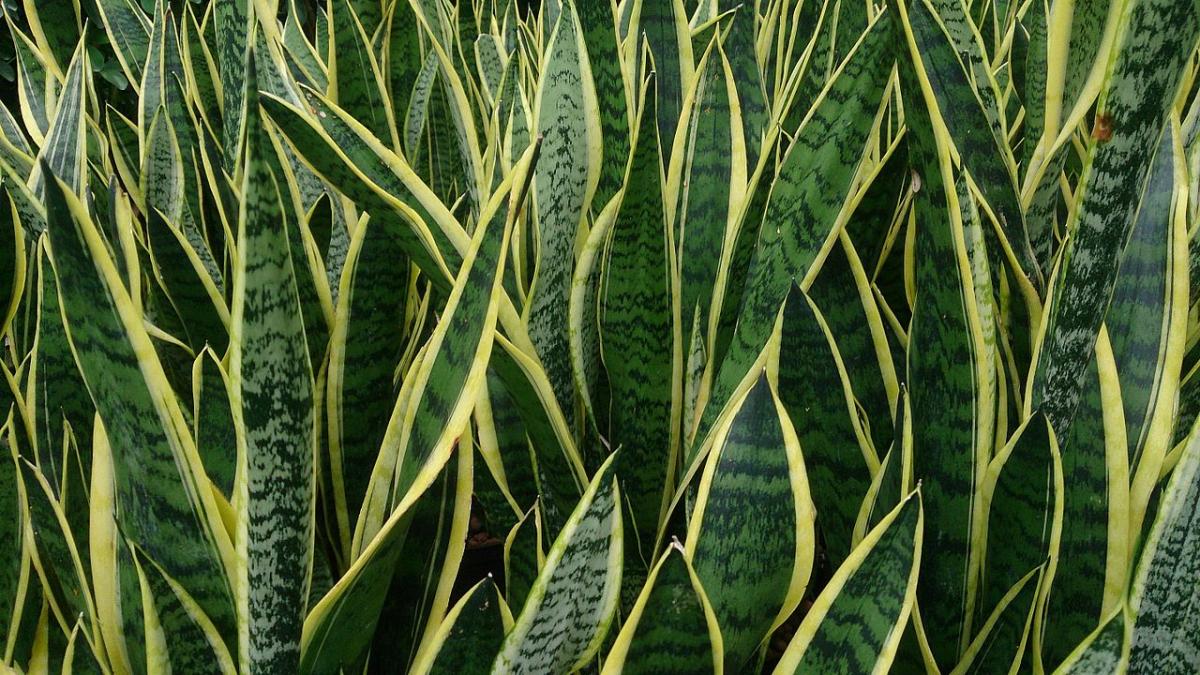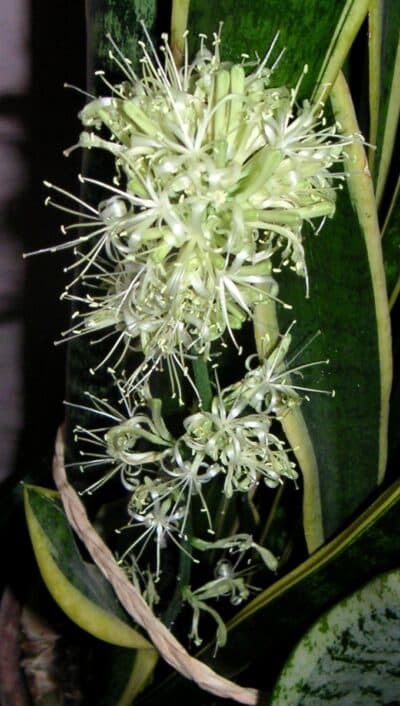
Image - Wikimedia / Mokkie
La Sansevieria trifasciata 'Laurentii' It is a plant that, perhaps due to its scientific name, you do not know exactly what it is, but seeing the image above, it will surely not be difficult for you to guess; even a loved one or yourself may have it. The truth is that it is a species that we find very easily in nurseries and garden stores.
It is widely used as an indoor plant, since it can live without any problem inside a house. However, it is important that it does not lack lightOtherwise, its leaves would lose color and firmness.
Origin and characteristics of Sansevieria trifasciata 'Laurentii'
It is a succulent plant native to tropical Africa known by the names Saint George's Sword or Tiger's Tongue. It is convenient to clarify that since 2017 its scientific name became Dracaena trifasciata 'Laurentii', since various molecular studies showed that all the Sansevieria They are genetically related to the Dracaena. For more information, you can do click here. Even so, the former is still accepted, but as a synonym.
Turning to its characteristics, it must be said that It has erect leaves, whose maximum length is 150 centimeters and which can measure up to 10 centimeters wide.. Its color is dark green with some blackish spots, and it also has a yellowish margin. As for the flowers, they emerge from an inflorescence up to 80 centimeters long, and are greenish in color. And the fruit is a small orange berry that contains a seed.
How do you take care of it?
Its maintenance is very simple. It is a plant that, due to its origin and evolution, withstands drought and extreme heat well. But we want it to be as beautiful and healthy as possible, so I'm going to tell you about the care I give to mine so that you too can enjoy a Sansevieria trifasciata 'Laurentii' for a long time:
Location

Image - Wikimedia / Mokkie
Where should I put it? Well, it will depend a lot on whether you decide to have it inside or outside the house. For example:
- Inside the house: it must be placed in a room with plenty of natural light. Likewise, it is important to avoid placing it near air conditioning, fans and others, since air currents dry out the environment, and as a consequence, the plant would begin to have dry leaves.
- Abroad: if you choose instead to have it outside, you can put it in semi-shade or full sun, but keep in mind that if it has never had direct sunlight before and now you expose it to it, it will burn. It is best to get used to it little by little, leaving it in a sunny place for a little while (an hour or so) every day.
Irrigation
Now Sansevieria trifasciata 'Laurentii' You have to water it rather little. As it supports drought but not excess water, it will be enough to water it when the soil is dry. I water mine twice a week in summer, and every 15 days (or sometimes more) the rest of the year, being in Mallorca, where the climate is Mediterranean.
This climate is characterized by having very dry and hot summers, and mild winters (in my area, for example, it is difficult for it to drop below -1,5ºC, although in other parts of the Mediterranean region it can drop to -7ºC); In addition, the humidity of the air is very high due to the influence of the sea.
Anyway, if you have doubts, you can insert a wooden stick and see how it comes out: if when you extract it it is clean and dry, it is because the soil is like that, dry, so you will have to water it.
Subscriber
It is interesting to fertilize it in spring and summer so that it grows healthier. For it, a liquid fertilizer for succulent plants will be used (for sale here), or an organic fertilizer such as guano. Regardless of which one you are going to apply, you must follow the instructions for use, since an overdose could kill the plant.
Transplant
If you are going to have your plant in a pot, you should change the pot from time to time: when it already has many suckers, for example, or when its roots come out of the holes. The transplant will be done in spring, or at the latest in early summer. Also, you should keep in mind that you have to put a substrate for succulents like the one you can buy here, or mix peat with perlite in equal parts.
And if you intend to plant it in the garden, you should also do it during those seasons, since otherwise it will cost more to overcome it.
Multiplication

Image – Wikimedia/Béotien lambda
You can multiply it by seeds, suckers and leaf cuttings throughout the spring.
Rusticity
La Sansevieria trifasciata 'Laurentii' is sensitive to frost. It can withstand up to -1,5ºC as long as it is punctual, but the ideal is that it does not run out of protection if it drops below 0 degrees in your area.
Where to buy?
Do you want to have one? Then doubt it. Click here to get your copy:
Enjoy it.
